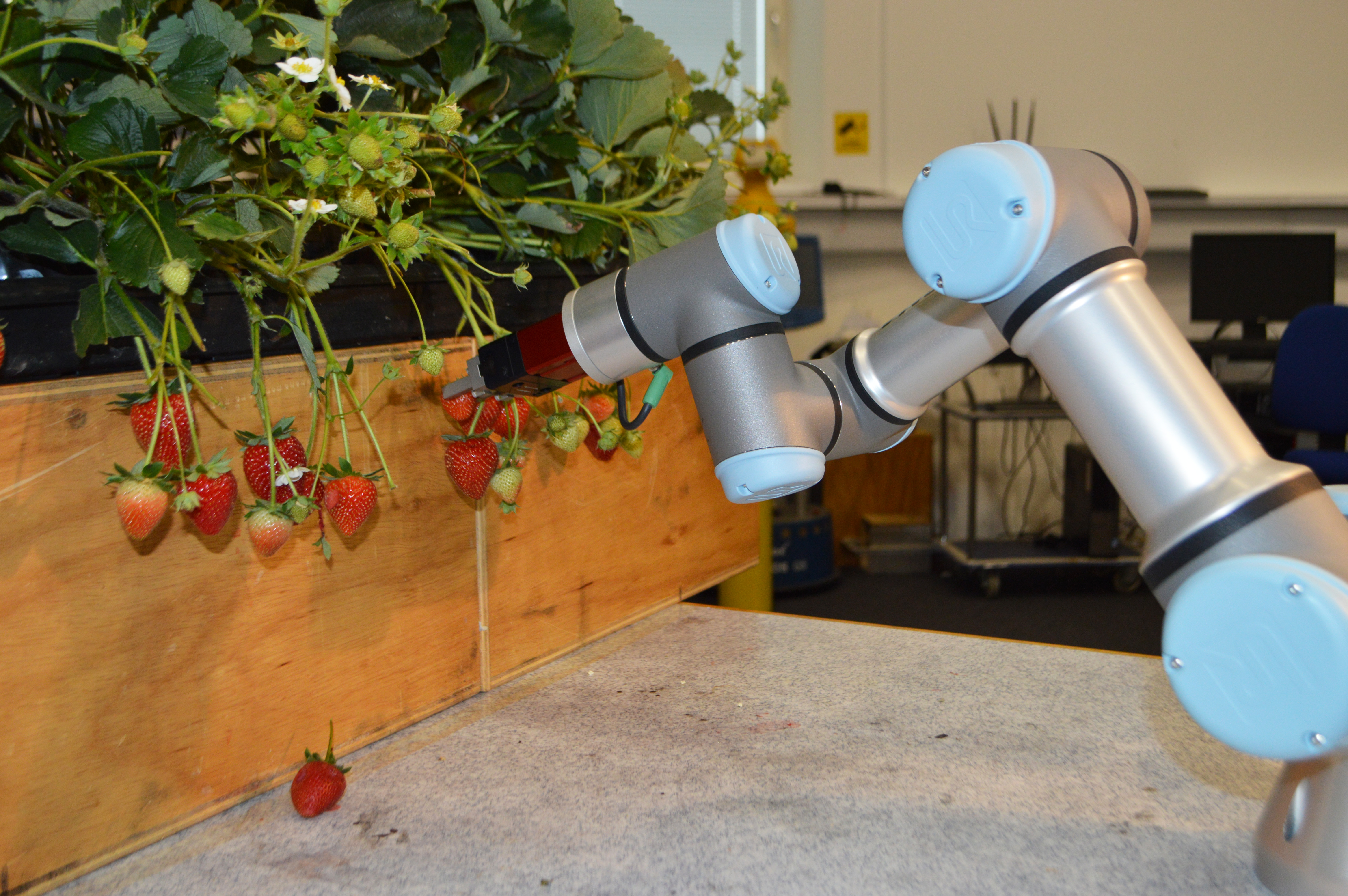Robotics experts at the University of Essex design fruit-picking robots in an attempt to tackle a loss in seasonal migrant workers as Brexit looms.
The University researchers are working in conjunction with world-famous jam-makers Wilkin and Sons of Tiptree to develop the latest technology.
According to the university, up to 20% of soft fruit is currently unpicked due to problems recruiting enough workers. A situation that is sure to be further challenged post-Brexit.
A robotic solution
The research at Essex, led by Dr. Vishuu Mohan, from the School of Computer Science and Electronic Engineering, is part of a major project looking at how robots can work in natural, unstructured environments.
Where they can pick, inspect and pack soft fruits, working alongside humans in a farm environment and also reducing production costs.
“The challenge is that no two berries are the same – they come in different shapes, sizes, order of ripeness and many are hidden in the foliage,” explained Mohan.
In a constantly changing outdoor environment, the machine must adapt to challenges that are in stark contrast to a typical industrial environment.
“Dextrous manipulation in unstructured environments is a big challenge for robotics today,” said Mohan.
In order to develop a machine that can deal with an “unstructured environment” researchers must build a system with a “complex, integration of vision, touch, force and movement and an ability to learn and adapt,” to mimic that of a human worker.
Ready for Brexit?
Scientists are currently working with a special variety of strawberry which has low-hanging fruit to test their design.
Work is currently underway to enable robots to select and pick the fruit with a prototype available in approximately five to six months.
However, the research will then look at bi-manual robotic coordination, fixing the arm to a mobile autonomous vehicle, dealing with human and robot interaction and working with different varieties of strawberries will take up to two years.
At such an early stage in development, the final cost to farmers cannot yet be estimated.


